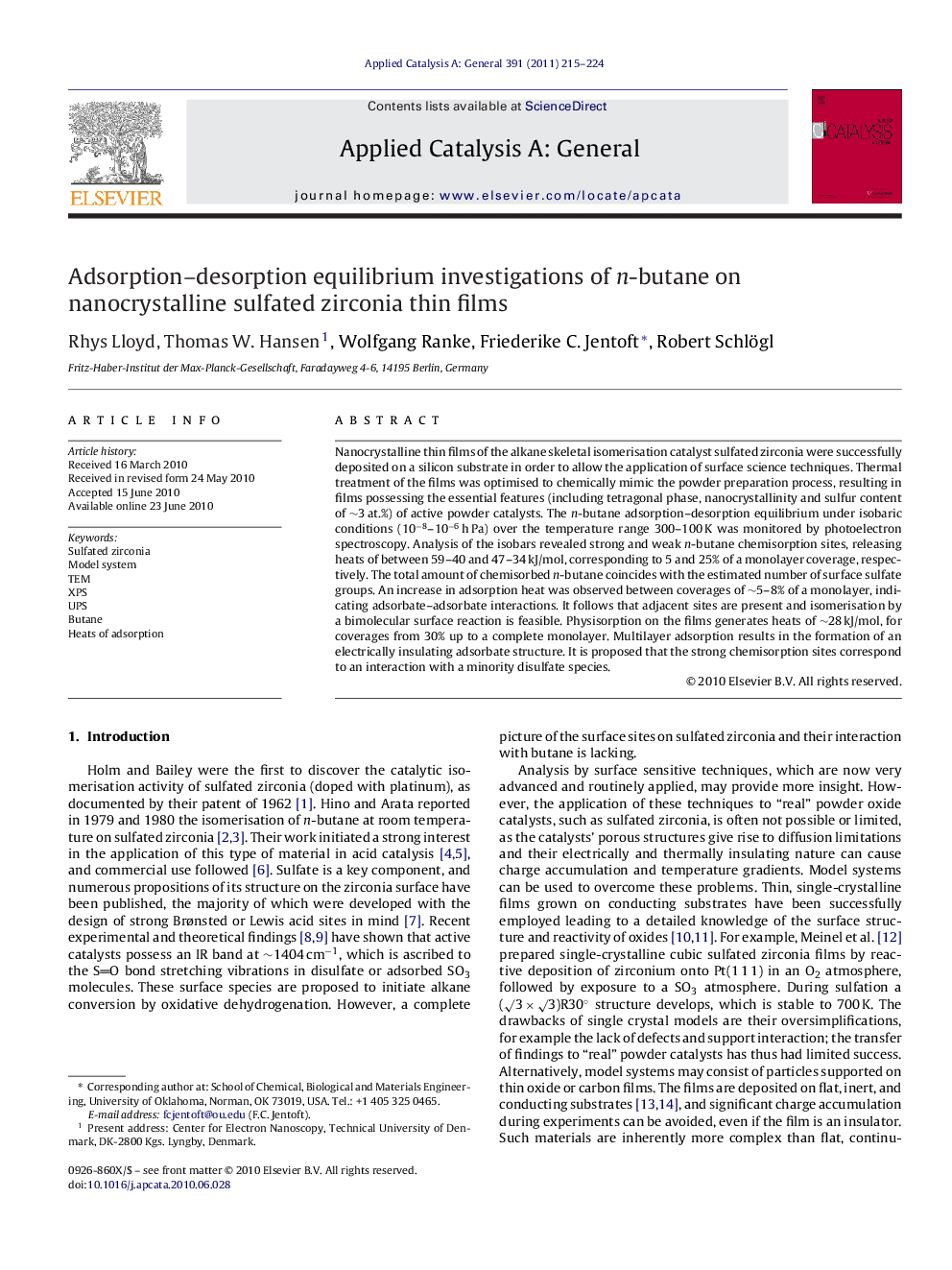| کد مقاله | کد نشریه | سال انتشار | مقاله انگلیسی | نسخه تمام متن |
|---|---|---|---|---|
| 41640 | 45895 | 2011 | 10 صفحه PDF | دانلود رایگان |

Nanocrystalline thin films of the alkane skeletal isomerisation catalyst sulfated zirconia were successfully deposited on a silicon substrate in order to allow the application of surface science techniques. Thermal treatment of the films was optimised to chemically mimic the powder preparation process, resulting in films possessing the essential features (including tetragonal phase, nanocrystallinity and sulfur content of ∼3 at.%) of active powder catalysts. The n-butane adsorption–desorption equilibrium under isobaric conditions (10−8–10−6 h Pa) over the temperature range 300–100 K was monitored by photoelectron spectroscopy. Analysis of the isobars revealed strong and weak n-butane chemisorption sites, releasing heats of between 59–40 and 47–34 kJ/mol, corresponding to 5 and 25% of a monolayer coverage, respectively. The total amount of chemisorbed n-butane coincides with the estimated number of surface sulfate groups. An increase in adsorption heat was observed between coverages of ∼5–8% of a monolayer, indicating adsorbate–adsorbate interactions. It follows that adjacent sites are present and isomerisation by a bimolecular surface reaction is feasible. Physisorption on the films generates heats of ∼28 kJ/mol, for coverages from 30% up to a complete monolayer. Multilayer adsorption results in the formation of an electrically insulating adsorbate structure. It is proposed that the strong chemisorption sites correspond to an interaction with a minority disulfate species.
The sites on sulfated zirconia were characterised by first creating a model system in the form of a nanocrystalline film and then using ultraviolet photoelectron spectroscopy to follow the adsorption of n-butane. Isobars and isosteric heats of adsorption are deduced from the data, and the site distribution is elucidated.Figure optionsDownload high-quality image (160 K)Download as PowerPoint slideResearch highlights▶ Nanocrystalline thin films of sulfated zirconia synthesized. ▶ Formation of amorphous or tetragonal phase attributed to surface energy effects. ▶ UP spectra of adsorbed n-butane measured. ▶ n-Butane heats of adsorption deduced and adsorption site distribution elucidated. ▶ Adsorbate–adsorbate interactions present at coverages of 5–8% of a monolayer.
Journal: Applied Catalysis A: General - Volume 391, Issues 1–2, 4 January 2011, Pages 215–224